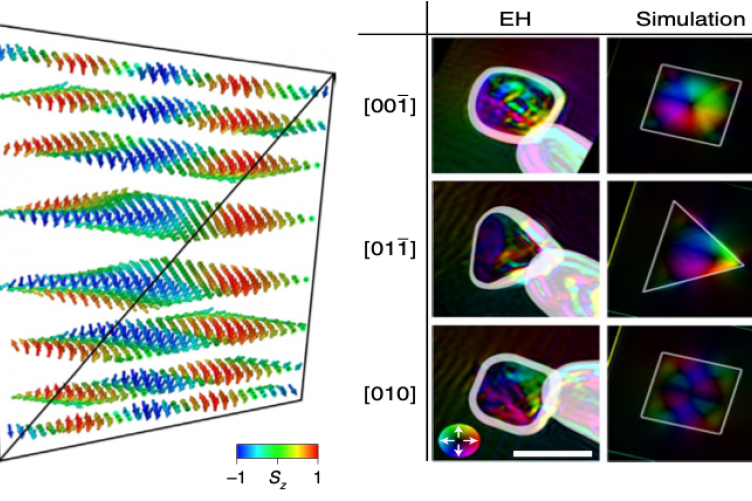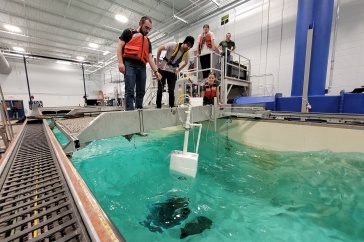
New research from UNH has mapped magnetic fields in three dimensions, a major step toward solving what associate professor of physics Jiadong Zang calls the “grand challenge” of revealing three-dimensional magnetic configuration in magnetic materials. The work, published recently in Nature Materials, the top journal of materials research, has implications for improving diagnostic imaging and magnetic storage devices.

The result of three years of high-performance numerical simulations, Zang and his collaborators mapped a three-dimensional structure of a 100 nanometer magnetic tetrahedron sample using only three projection angles of electron beams. “The number three really represents a breakthrough in this field,” says Zang. He offers computed tomography (CT) medical imaging as an analog, as if instead of sending multiple beams of X-rays to map tissues in the body the same images could be produced with only three beams.
Indeed, reducing electron beam exposure in fast three-dimensional magnetic imaging is one potential application for this collaborative research, for which Zang and his former Ph.D. student Alexander Booth conducted theoretical analysis and researchers from Japan and the University of Wisconsin performed the experimental part.
The researchers’ findings also have implications for improving storage capacity of magnetic memory devices, which currently deposit circuits onto two-dimensional panels that are approaching maximum density. “The promising way to improve them is to build three-dimensional circuits,” says Zang. “Our brain is a three-dimensional object. It’s ironic that all our devices are two-dimensional. They’re underperforming compared to our brains.” The method offered by this research will be a useful tool to detect and characterize three-dimensional magnetic circuits.
Zang and Booth’s contributions to this research were exclusively funded by the US Department of Energy (DOE), Office of Science, Basic Energy Sciences (BES) under award number DE-SC0020221.
-
Written By:
Beth Potier | UNH Marketing | beth.potier@unh.edu | 2-1566




















































